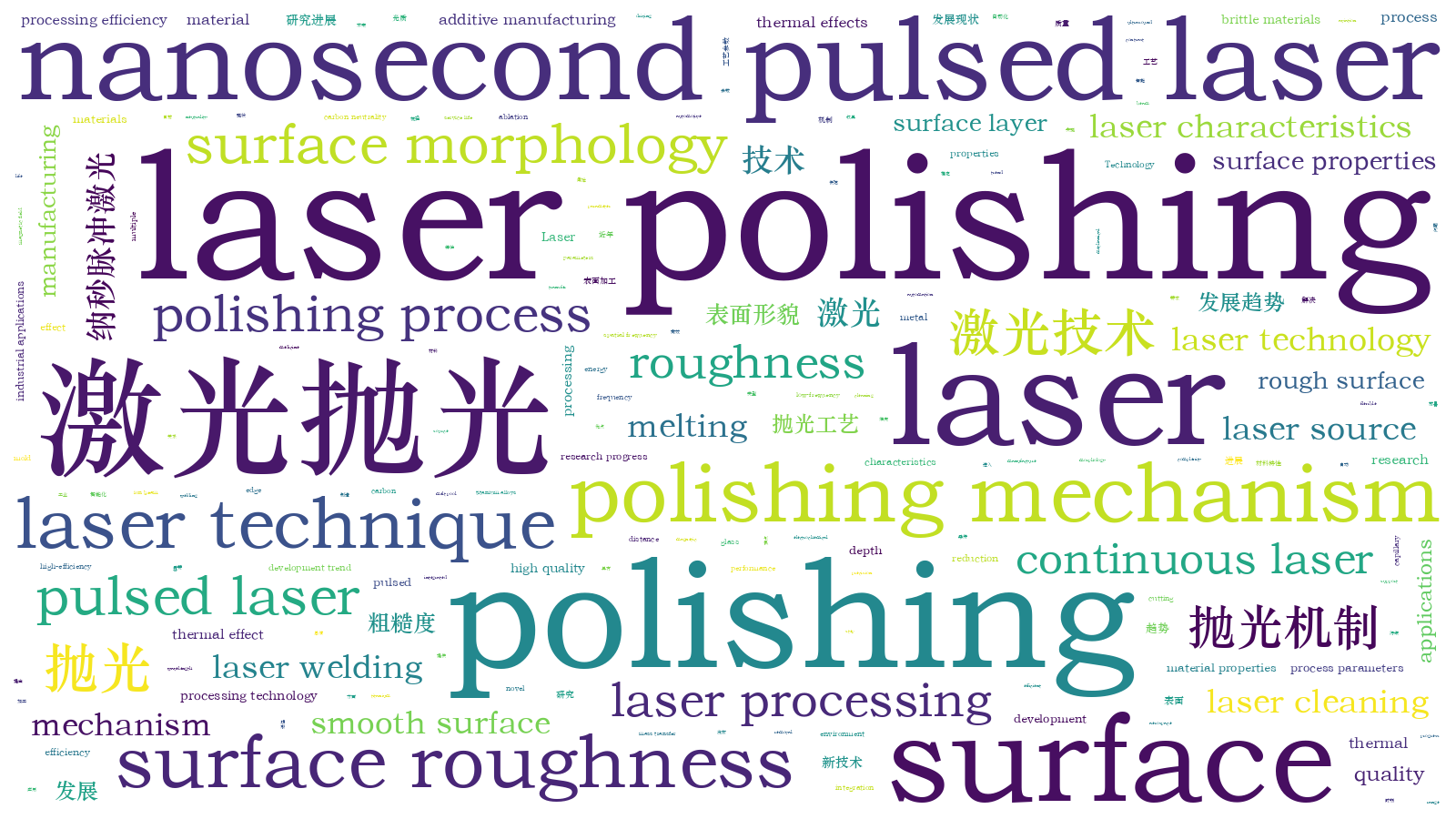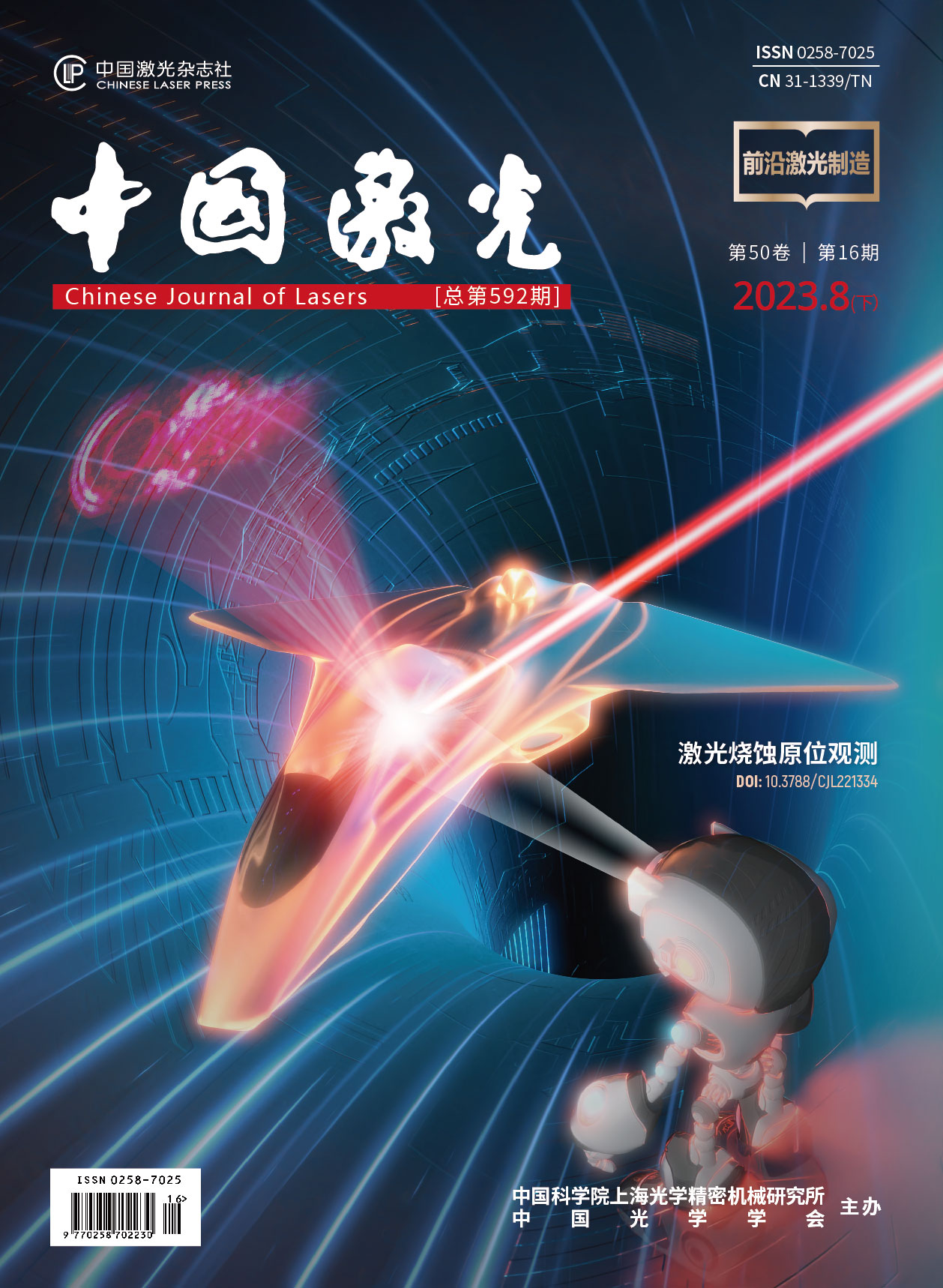激光抛光技术研究进展与发展趋势  下载: 951次
下载: 951次
The traditional manufacturing sector is going through a scientific and technical revolution as a result of the rapid advancement of laser technology. Many countries have made significant investments in the research and development of new manufacturing models to achieve high-quality, high-efficiency, flexible automation, integration, and intelligent production. Surface polishing is a crucial step in the manufacturing of industrial products, and it has numerous applications in the domains of aviation, aerospace, automotive, mold, precision manufacturing, semiconductors, and other fields. Additionally, surface polishing quality also directly affects the appearance, performance, and service life of products. Current surface polishing methods like manual/mechanical, chemical/electrochemical, bonnet, abrasive flow, ion beam, and vibration polishing all have their advantages and are appropriate for particular applications; however, they are rarely intelligent or non-polluting and seldom have high quality or efficiency. Therefore, it is imperative to develop cutting-edge and effective surface polishing technologies to meet the strategic goals of reducing carbon emissions and realizing carbon neutrality as well as to support the advancement of the manufacturing industry in an environment friendly manner.
Laser polishing is a novel surface polishing technology that has drawn much interest from researchers both domestically and internationally because it does not pollute, can process diverse objects, has steady polishing quality, and can be easily automated. During laser polishing, the laser melts and evaporates the surface layer of the polished material, driving the molten metal to valleys under the action of capillary or thermal capillary forces, resulting in a smooth surface. Laser polishing not only generates a smooth surface, but also improves the surface properties of the material. Furthermore, laser polishing is more suitable for industrial applications than traditional polishing technologies because it can be integrated to processes such as additive manufacturing, laser welding, and laser cleaning to achieve efficient and intelligent product manufacture. At present, laser polishing technology is still fledgling and several technical challenges remain. Therefore, this paper looks back at the development of laser polishing technology, summarizes the challenges that must be overcome, and analyzes the future development trend of laser polishing technology in anticipation of promoting the advancement and maturity of laser polishing technology.
Laser polishing can be categorized into two types thermal and cold polishing, according to physical and chemical changes, where the basic mechanism of thermal polishing is the melting of the surface material and the subsequent redistribution of the molten surface material. Thermal polishing can be specified as employing shallow surface melting or over melting mechanism based on the melting depth. The melting depth in the shallow surface melting mechanism is close to the surface’s maximum peak-to-valley vertical distance, whereas the melting depth in the surface over melting mechanism is greater than the surface’s maximum peak-to-valley vertical distance. The cold polishing process has an insignificant thermal effect and removes the rough surface by an ablation or photochemical mechanism, resulting in a smooth surface. Different surfaces are appropriate for various laser polishing mechanisms, which are deeply related to the material properties, laser characteristics, process parameters, and processing environment. According to the characteristics of the shallow surface melting mechanism and numerous research results (Table 1), the laser polished surface roughness can reach several tens of nanometers under the shallow surface melting mechanism; however, the surface roughness reduction rate is small (10%-60%); in contrast, it is difficult to obtain a smaller surface roughness under the over melting mechanism but a high surface roughness reduction rate (>80%) can be realized. Moreover, the shallow surface melting mechanism is most widely applied in pulsed laser polishing processes and is suitable for metal surfaces with small original surface roughness due to its limited effect on low-frequency feature removal. The over melting mechanism is more frequently used in continuous laser polishing processes, and its large melting depth makes it suitable for metal surfaces with rough original surfaces. The ablation and photochemical mechanism are commonly utilized in ultrashort pulsed laser and short wavelength laser polishing processes, where the thermal effect is minor and ideal for hard and brittle materials like glass, ceramics, and some materials with poor thermophysical properties.
Recently, researchers have reported cutting edge findings in continuous laser and pulsed laser polishing. They found that to achieve high quality and effective laser polishing, scratches over the whole spatial frequency range must be smoothed out, which necessitates the employment of multiple laser polishing mechanisms. Consequently, a novel process combining continuous and pulsed laser polishing has become one of the most active pursuits of laser polishing research, and this combined process can realize high surface roughness reduction rates along with small surface roughness (Fig.10). Moreover, to enhance the heat and mass transfer of the laser polishing melt pool and improve the quality of laser polishing, energy field-assisted laser polishing technologies are being rapidly developed, such as ultrasound and magnetic field. The laser polishing technology has been proven in typical applications like molds, medicine, and additive manufacturing. The Fraunhofer Institute and RWTH Aachen University in Germany have conducted extensive scientific research on laser polishing on a variety of material surfaces, including mold steels, titanium alloys, additive manufacturing workpieces, and glass (Fig.15).
This paper reviews the recent research progress of laser polishing technology, including mechanism, process, surface morphology characteristics, multiple laser polishing, and laser polishing applications, and presents the outlook of the development of laser polishing technology that can promote its applications. Currently, laser polishing technology with various laser source types for diverse objects and applications, including energy field assisted laser polishing and other laser processing technology integration, are being developed to solve the problems of parameter complexity, poor polishing quality, excessive thermal effects, low processing efficiency, poor performance, and others. We believe that with the efforts of most scientist and engineers in the field, laser polishing technology will grow and thrive and will be adopted in the manufacturing sector.
刘二举, 徐杰, 陈曦, 陈彦宾, 单德彬, 郭斌. 激光抛光技术研究进展与发展趋势[J]. 中国激光, 2023, 50(16): 1602202. Erju Liu, Jie Xu, Xi Chen, Yanbin Chen, Debin Shan, Bin Guo. Advancements and Developments of Laser Polishing Technology[J]. Chinese Journal of Lasers, 2023, 50(16): 1602202.







